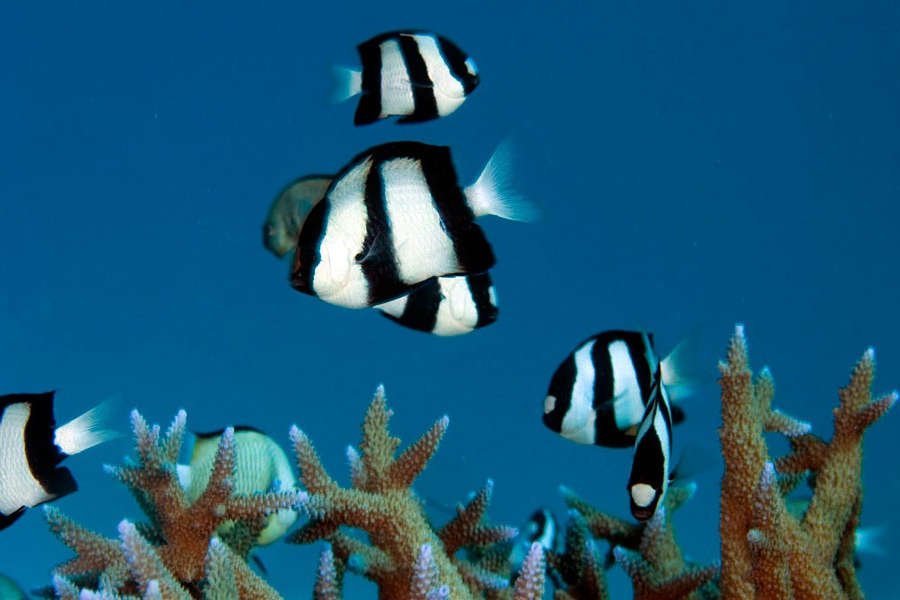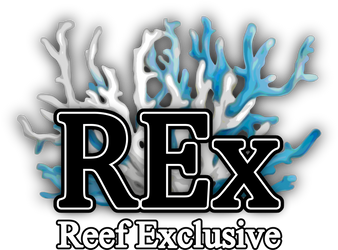
Three Stripe Damselfish (Dascyllus Aruanus)
Species Name : Dascyllus Aruanus
Care Level : Easy
Temperament : Aggressive
Color : Black, White
Diet : Omnivore
Reef Compatible : Yes
Water Conditions : sg 1.020-1.025, 72-78° F, dKH 8-12, pH 8.1-8.4
Max. Size : 3¾"
Origin : Fiji, Indonesia
Family : Pomacentridae
Minimum Tank Size : 30 gallons
Three Stripe Damselfish (Dascyllus Aruanus), known commonly as the Whitetail Dascyllus or Humbug Damselfish among other vernacular names, is a species of marine fish in the family Pomacentridae. Its name derives from 'humbugs', which are boiled peppermint sweets or candies from the United Kingdom.
The body shows three black belts on white background connected in the dorsal region. The first hides the eye going down up to the chin, the second is aligned with the pelvic fins: the third one precedes the caudal peduncle prolonging up to the extremities of the anal and dorsal fins that end, like the pelvic ones, with a blue slight border.
A 30 gallon or larger aquarium is suitable with plenty of hiding places. They tend to tolerate fluctuating water conditions better than a lot of other saltwater fish. They are good fish for reef tanks.
Due to its aggressive behavior as an adult, it will do well with other moderately aggressive fish in a community tank. It is recommended that you add all other fish to your aquarium first and the Damsels last. This will help minimize their aggressive behavior. It will not harm invertebrates or disturb the tank setting.
They live typically of a mixture of zooplankton and algae, some live more on algae and some on zooplankton. Some Damselfish even cultivate their preferred algae in a small "garden", so they have their own foodsource. This does explain their aggression towards other fish and invertebrates, which want to eat their algae. They should be provided with a well balanced and varied diet of live, frozen, freeze-dried, and vitamin enriched foods such as brine shrimp, finely chopped mysis shrimp, bloodworms, finely chopped krill, and other prepared foods such as carnivore and herbivore pellets and flakes.
